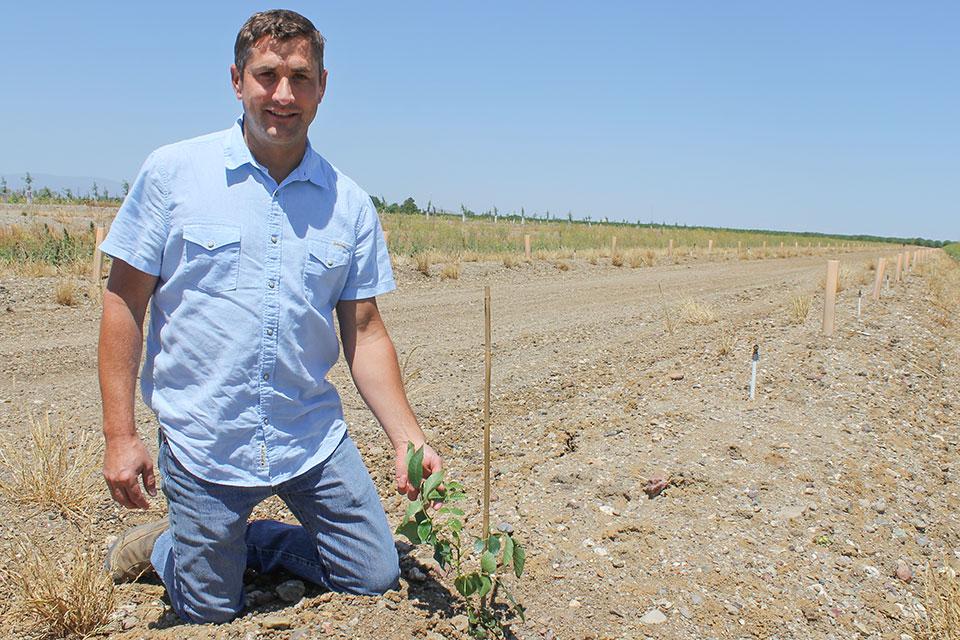Max Yield in the Field: How Precision Irrigation Hits the Right Spot for California Grower

This past spring, Leon Etchepare of Emerald Farms planted a new orchard in nearby Artois, CA, with clonal walnuts, variety ‘VX-211’. The orchard features precision irrigation — an eye-popping 26 different watering zones.
Photo by David Eddy
Leon Etchepare was driving through the Sacramento Valley one recent day when he slowed his pickup truck and pointed to a line of walnut trees of very different heights, from about 15 to 35 feet, in the distance. “See that,” he said, “that’s all due to soil type.”
Etchepare and his father Allen own Emerald Farms of Maxwell, CA, writes David Eddy at Growing Produce, where they farm about 1,700 acres of almonds and 2,600 acres of walnuts, as well as seed for dozens of vegetable crops. Leon represents the fourth generation of Etchepares to work the farm, which was founded in 1918 by his great grandfather, an indentured servant from France who worked as a shepherd and then developed his own herd.
Leon Etchepare worked in other jobs after graduating from college before returning to the farm 10 years ago. His time away gave him a newfound perspective on the land, he says, that is most definitely grounded.
“When I came back to the farm, I concentrated on soil health,” he says, “because that’s where it all starts.”
MORE BY GROWING PRODUCE
Agricultural Robotics Market Poised To Kick Growth Into High Gear
But you can only improve soil health so much. After all, if you’re farming in rocky soil, you’re not going to change it into a rich loam. One thing you can control, however, is the moisture level of the dirt you’re farming, and Etchepare soon realized that was going to be the key to healthy trees and large, consistent yields.
First, they stopped flood irrigating because that was clearly not optimizing each tree’s growing environment.
“We’re not trying to save water, we’re just trying to use the right amount,” he says. “But that often means saving water.”
Emerald Farms began trying a lot of technology, starting with pressure bombs to measure plants’ water potential, and then later installing Sentek moisture sensors. They found a lot of the trees weren’t getting enough water, while still others were getting over-irrigated.
But in a lot of situations, it wasn’t the amount of the irrigation that was the problem; it was the state of the soil. For example, Etchepare found in some situations that there was a lack of water penetration, which could generally be rectified by adding a whole lot of gypsum.
“We learned we needed to change the way we irrigate and in some cases the irrigation system,” Etchepare says. “We also learned that when you employ a lot of technology, there is a lot to manage.”









